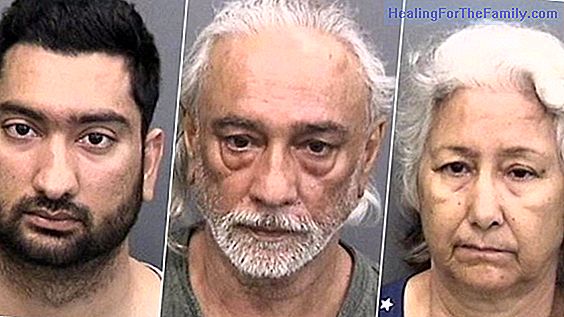Fructose intolerance in children
All metabolic reactions in the body are genetically encoded, and they need special proteins called enzymes . If there is an error in the metabolism, some of these reactions do not occur properly and the precursor compounds of the reaction accumulate and are generally toxic, while the subsequent ones
All metabolic reactions in the body are genetically encoded, and they need special proteins called enzymes. If there is an error in the metabolism, some of these reactions do not occur properly and the precursor compounds of the reaction accumulate and are generally toxic, while the subsequent ones are not synthesized correctly.
A child can be diagnosed with Fructose Intolerance. Within this denomination we can find two disorders. We tell you which ones.
Causes of fructose intolerance in children

The fructose intolerance in children can occur in two cases:
- A problem in the intestine:is given by a specific intestinal transporter deficit for fructose GLUT5, present in the brush border of intestinal cells or enterocytes. This entity is misnamed Fructose Intolerance, but should be called Fructose Malabsorption. It is very common (it is estimated that it affects 30% of the population). The symptoms after the ingestion of fructose are reduced to gastrointestinal alterations, (similar to lactose intolerance), by the fermentation of fructose in the colon: nausea, diarrhea, meteorism or gas, etc ... Sometimes intolerance (called intolerance secondary) is due to some intestinal disease, which damages the brush border of the intestinal mucosa, for example after gastroenteritis, by a bacterial overgrowth, celiac disease, and could recover after the improvement of the underlying disease.
- An enzyme problem:Due to a deficiency of aldolase B, which is the liver enzyme that metabolizes fructose. This is really the Hereditary Intolerance to Fructose (IHF). It is a genetic alteration, which is inherited autonomically recessive (the patient must have 2 genes mutated to have the disease, usually inheriting one from the father and another from the mother who are carriers without symptoms). In this entity the symptoms appear when the infant begins to consume common sugar, fructose or sorbitol, for example when introducing fruits, sweetened porridges or vegetables. The child develops severe hypoglycemia, abdominal pain, irritability, drowsiness, vomiting, lack of appetite, little weight gain. You can develop severe liver and kidney disease. It is rare but if it is not treated it can have serious consequences. However, early diagnosis and treatment avoid the consequences of the defect and allow a good quality of life for the affected children.
Diagnosis of fructose intolerance in children
The diagnosis in both cases is different, since hereditary fructose intolerance requires enzymatic and / or genetic studies, while fructose malabsorption is usually diagnosed by the hydrogen test exhaled
This test is performed after a minimum fast of 8 hours (you can drink water), a sample of exhaled air is taken from the patient in a small device containing a sensor for hydrogen. This would be the basal value. The patient is then given a solution of fructose, or a combination of fructose and sorbitol (which would be more sensitive). In the next 2-3 hours samples of exhaled hydrogen are collected, which will give us the diagnosis of malabsorption. It is also recorded if the patient has symptoms such as abdominal pain or diarrhea.
Treatment of fructose intolerance in childhood El 1. Treatment in
Hereditary fructose intolerance consists of strict elimination of fructose from the diet , since the consequences of the transgression can be serious. Such treatment must be maintained for life. The diet of children with IHF will be based on the elimination of fructose, that is, sugar, fruit, honey, vegetables and products derived from them. It is best to treat as quickly as possible to avoid liver and neurological damage.2.
Fructose malabsorption is treated with a low diet (not strict elimination) in fructose, depending on the tolerance of each patient. The degree of restriction of fructose is, therefore, different in both disorders. The fruits that produce the most intolerance are apple, pear, plum, cherry, peach and apricot. Chocolates, pastries, commercial juices, syrups, candies and chewing gum also usually contain fructose and / or sorbitol. In any case, the diet will be individualized, and will be adjusted to the real needs of each patient and to the patient's tolerance, aiming to improve the symptoms, with the least possible dietary restriction.












